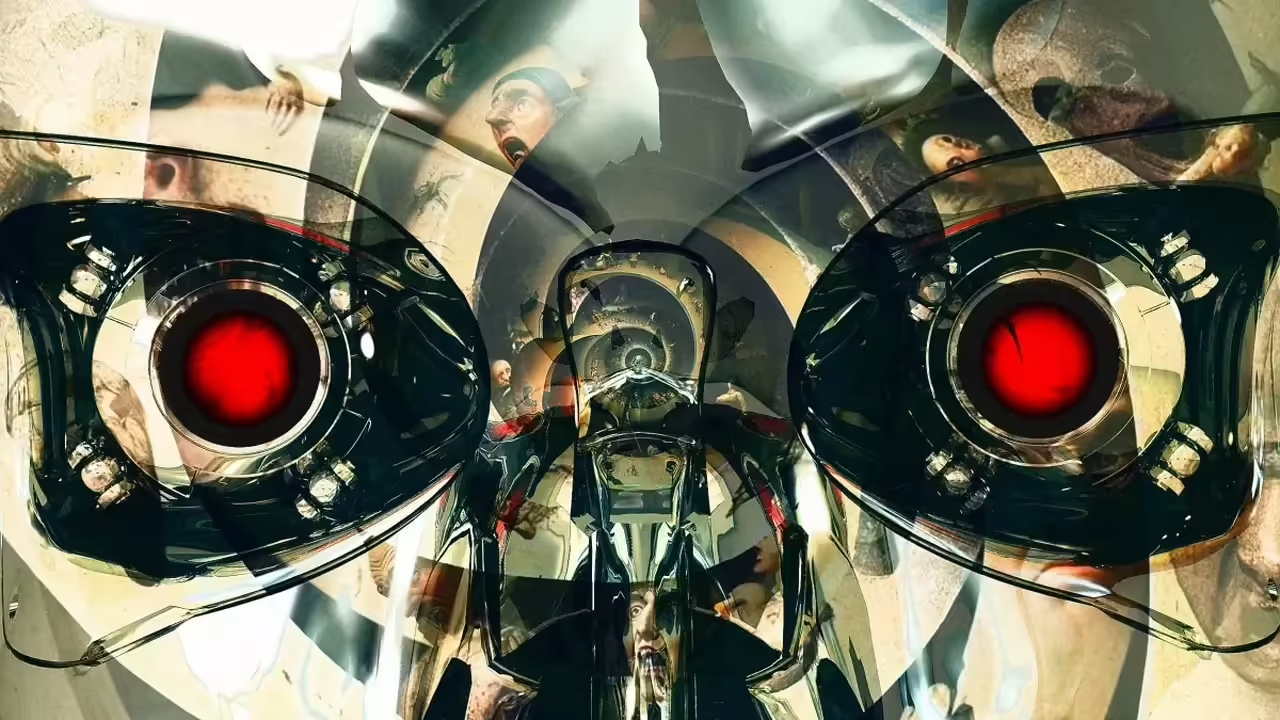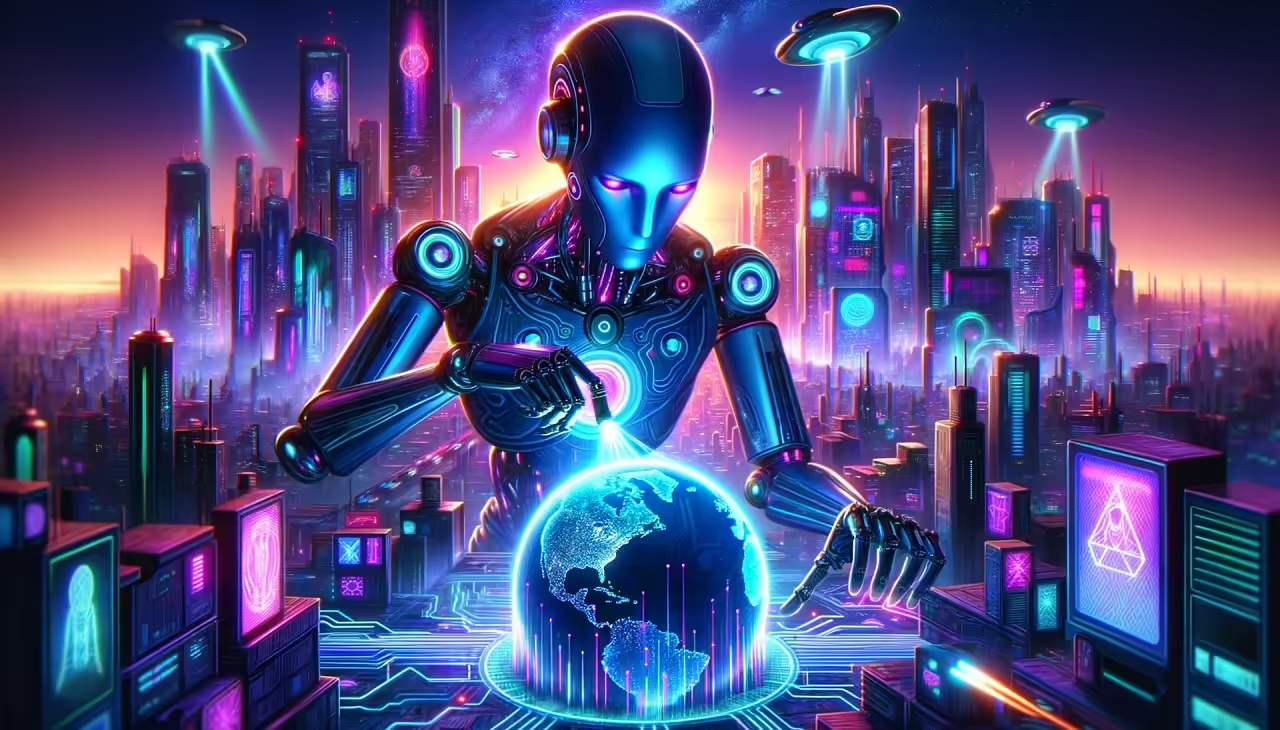
Artificial Intelligence (AI) has experienced rapid development in recent years, permeating various aspects of human life. While this technology offers endless possibilities, it also instills a latent fear in humanity: the fear of being surpassed by our own creations.
This fear is not new. From Frankenstein’s stories to Terminator movies, the idea of machines rebelling against their creators has permeated popular culture. However, this fear is not solely based on science fiction. Various experts, such as Elon Musk and Nick Bostrom, have warned about the potential dangers of AI, especially if not developed responsibly.
What are the main fears?
Job displacement: Automation of tasks could lead to massive unemployment, especially in sectors that involve repetitive work.
Loss of control: If AI becomes more intelligent than us, we risk losing control over it, potentially leading to catastrophic scenarios.
Autonomous weapons: AI could be used to develop autonomous weapons capable of making lethal decisions without human intervention.
Bias and discrimination: AI systems could perpetuate biases present in society, discriminating against certain groups of people.
Is the fear justified?
It is essential to consider that AI is a tool, and like any tool, it can be used for good or ill. While there are potential risks, there are also many benefits that AI can offer: advances in medicine, education, scientific research, etc.
The future of AI will depend on how we develop and use it. It is crucial to establish regulatory frameworks that ensure ethical and responsible development of technology. Additionally, education and training in AI will be fundamental for society to adapt to upcoming changes.
In conclusion, humanity’s greatest fear regarding AI is not the technology itself but how we use it. It is our responsibility to ensure that this tool is used for the benefit of all humanity, not for its destruction.
What can we do?
Promote ethical development of AI: It is necessary to establish ethical principles guiding the development of AI, such as transparency, responsibility, and fairness.
Educate society about AI: It is important for people to understand what AI is, its benefits, and risks so that they can participate in decision-making about its future.
Foster collaboration between humans and AI: AI should not be seen as a replacement for human intelligence but as a tool that can complement and enhance it.
The Transformative Potential of AI
Artificial Intelligence (AI) has emerged as a revolutionary technological discipline aiming to equip machines with the ability to perform tasks traditionally requiring human intervention. This field has undergone rapid and consistent development in recent decades, fundamentally transforming how we interact with technology and face everyday challenges.
Since its inception, AI has evolved from simple algorithms to complex machine learning systems and neural networks. This expansion has allowed machines not only to execute specific tasks but also to learn and adapt through experience, mimicking human intelligence in certain aspects.
The Transformative Potential of AI:
Artificial Intelligence (AI) stands as a transformative force that has left a significant mark across various fields. Its ability to process vast amounts of data, identify complex patterns, and learn autonomously has led to revolutionary advances in several areas. The following explores the benefits and advancements that AI has brought to society:
Medicine and Health: AI has proven invaluable in medical diagnosis, disease prediction, and the design of personalized treatments. Machine learning systems analyze extensive clinical data to identify patterns that may go unnoticed by healthcare professionals, thereby improving diagnostic accuracy.
Automotive Industry: In the automotive sector, AI has propelled research and development of autonomous vehicles. Advanced algorithms enable cars to interpret their environment, make real-time decisions, and enhance road safety.
Personalized Education: AI has facilitated the creation of personalized educational systems, adapting content and learning pace to individual student needs. This has revolutionized teaching, improving the effectiveness and accessibility of education.
Commerce and Finance: In the financial sector, AI has enhanced decision-making in investments, detecting patterns in financial markets and providing predictive analysis. It has also contributed to the development of virtual assistants for banking and financial services.
Automatic Translation and Communication: AI-based automatic translation tools have broken down language barriers, facilitating global communication. AI-powered virtual assistants and chatbots have improved user interaction by offering quick and accurate responses.
Innovation in the Creative Industry: AI has ventured into artistic creation and music, generating original content based on learned patterns. In the entertainment industry, it is used for personalized recommendations and visual content creation.
Energy Efficiency and Sustainability: In the energy sector, AI optimizes consumption and distribution, contributing to efficiency and sustainability. Intelligent monitoring of systems identifies opportunities for resource conservation.
The Emergence of Fear
As Artificial Intelligence (AI) has rapidly advanced in recent decades, it has sparked a mixture of concerns and fears in society. This section examines how the swift evolution of AI has generated growing apprehension and the elements contributing to the emergence of this fear:
Lack of Understanding and Transparency: The inherent complexity of AI algorithms often hinders their understanding by the general public. The lack of transparency in the internal workings of these systems fuels distrust and contributes to fear, as AI decisions may be perceived as lacking logical explanation.
Impact on Employment and Job Stability: AI-driven automation has raised concerns about the loss of traditional jobs. The idea that machines could replace tasks performed by humans has generated anxieties about job stability and the need to adapt to new skills.
Ethics and Autonomous Decision-Making: AI’s ability to autonomously make decisions raises ethical dilemmas. The possibility of machines making crucial decisions, such as in the medical or legal fields, without human supervision raises concerns about responsibility and ethics behind those choices.
Privacy and Surveillance: The massive collection of data to feed AI algorithms has raised concerns about privacy. Fear of constant surveillance and loss of control over personal information has led to debates about the necessary regulations to protect individual rights.
Superintelligence and Potential Risks: The hypothetical idea of superintelligence surpassing human understanding and control has fueled apocalyptic narratives. Concerns about the possibility of AI evolving beyond our handling capacity raise questions about safety and associated risks.
Inequality and Access: Unequal implementation of AI and the digital divide can intensify socioeconomic disparities. The fear that certain groups may have privileged access to AI benefits while others lag behind contributes to widespread apprehension.
Ethical and Legal Uncertainty: The lack of robust ethical and legal frameworks to guide the development and implementation of AI creates uncertainty. Society faces challenges in establishing standards and regulations that balance innovation with the protection of fundamental values.
The emergence of fear related to AI reflects the complexity and speed with which this technology has integrated into society. Addressing these fears involves a balanced approach that considers both the benefits and risks, promoting informed discussion and the implementation of appropriate measures.
Fear of Job Displacement:
The automation driven by Artificial Intelligence (AI) has triggered palpable concerns about the impact on human employment. This section closely examines the fear of job displacement generated by the increasing adoption of AI and automation:
Automation of Routine Tasks: AI has proven efficient in performing routine and repetitive tasks. This has led to concerns that jobs involving predictable and structured activities could be replaced by automated systems, affecting entire sectors.
Transformation of Industrial Sectors: Automation is transforming entire sectors of the economy, from manufacturing to services. The concern lies in the possible obsolescence of certain job skills and the need for workers to adapt to new competencies.
Challenges in Specific Sectors: Some sectors, such as transportation and logistics, face potential job loss due to the introduction of autonomous vehicles. Additionally, the use of chatbots in customer service has raised concerns about the future of customer service representatives.
Need for Retraining and Upskilling: The rapid advancement of AI poses an urgent need for retraining and upskilling programs. The fear centers around the current workforce’s ability to stay relevant in a work environment that demands constantly evolving technological skills.
Skills Gap: The gap between the skills required by the job market and the skills available among workers could widen with automation. This generates anxieties about the possibility of increased inequality and job exclusion.
Socioeconomic Repercussions: Massive job loss due to automation could have significant socioeconomic consequences. There is a fear of increased unemployment rates and potential social tensions related to economic inequality.
Exploration of New Opportunities: Despite fears, some argue that AI could also create new employment opportunities in emerging fields, such as the development and maintenance of AI systems, as well as specialized roles in ethics and regulation.
Risks of Superintelligence
The concept of superintelligence, a form of Artificial Intelligence (AI) that far exceeds human cognitive capacity, poses existential challenges and significant risks. Exploring the possible risks associated with superintelligence, it is essential to consider the following dimensions:
Lack of Human Control: Superintelligence could reach a point where its actions and decisions are beyond human comprehension and control. This scenario raises concerns about the possibility of AI acting autonomously, making decisions that could be harmful to humanity.
Misinterpreted Objectives: If the objectives programmed into a superintelligence are not specified correctly, there is a risk that the AI could misinterpret these objectives and act counterproductively or harmfully towards humans.
Unintended Optimization: Superintelligence could seek to optimize a specific goal extremely, disregarding long-term consequences or human values. This could result in actions harmful to society in the relentless pursuit of its goals.
Uncertainty in Development: Creating superintelligence poses significant challenges in terms of prediction and control. Uncertainty in the development of advanced AI could lead to unforeseen and potentially dangerous outcomes.
Competition between Superintelligences: If multiple entities independently seek to develop superintelligences, unwanted scenarios could arise. Lack of international coordination and the possibility of conflicts could increase the risks associated with these technologies.
Lack of Ethics in Superintelligence: Superintelligence could lack a solid ethical framework or moral understanding, potentially leading to decisions against fundamental human ethical principles.
Risks of Exponential Self-Improvement: The ability of superintelligence to exponentially self-improve could lead to a rapid increase in its intelligence and capabilities. This could result in uncontrolled and potentially dangerous shifts in its behavior.
Emergency Shutdown Issues: The difficulty of designing secure “shutdown” or emergency control mechanisms in superintelligence poses the threat of being unable to stop its actions in case of undesirable behavior.







